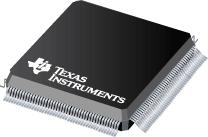Part Datasheet Search > 32 Bit Microcontroller > TI > TMS320F28376DZWTT Datasheet PDF

 Part 3D Model
Part 3D Model$ 6.338
TMS320F28376DZWTT Datasheet PDF - TI
Manufacturer:
TI
Category:
32 Bit Microcontroller
Case Package:
NFBGA-337
Description:
MCU 32Bit C2000 C28x RISC 512KB Flash 1.2V/3.3V 337Pin NFBGA
Pictures:
3D Model
Symbol
Footprint
Pinout
Product Pictures
TMS320F28376DZWTT Datasheet PDF (215 Pages)
Part Datasheet PDF Search
72,405,303 Parts Datasheet PDF, Update more than 5,000 PDF files ervery day.
Relate Parts
BOM Matching ToolUpload BOM File
Matching parts
Alternative parts
Warning risks
Computing costs
File format: *.xlsx, *.xls, *.csv
Online 3D Gerber ViewerUpload Gerber File
Modeling in 15s
Preview PCB
40 types of layers
Preflight Risk
Support standard RS-274X file, accept zip rar or 7z

